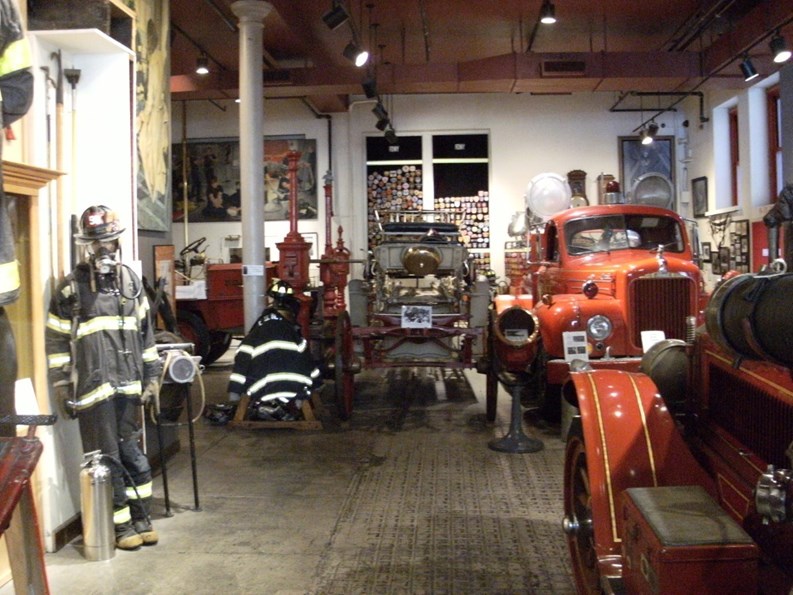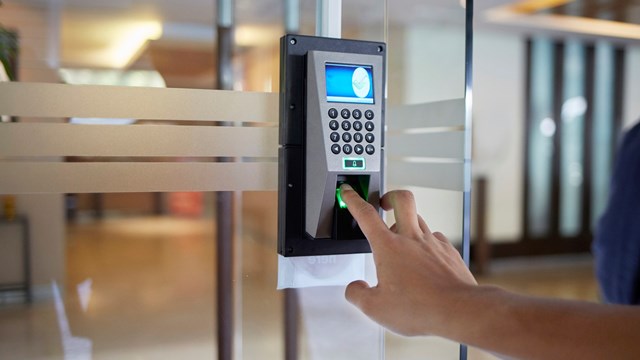These days SoHo is populated by fancy eateries, high-end boutiques, the Apple store, and of course, the art galleries. On the weekends, the streets are packed with shoppers and tourists. This neighborhood is characteristic of several aspects of today’s New York: stylish, modern, hipster, wealthy, trendy.
But somewhere tucked away in that same neighborhood is a reminder of New York’s past that highlights an important public service that's often taken for granted. In fact, if you were in SoHo recently, you might have walked past it without batting an eye.
The spot in question is a renovated 1904 fire station that houses the New York City Fire Museum. Located at 278 Spring Street, the museum contains old fire apparatuses, artifacts and artwork from New York’s firefighting past from the 1700s to the present day. Its mission, according to museum executive director Damon Campagna, is to preserve the history of firefighting in New York City and promote fire safety. “The collection is owned by the FDNY and the people of New York City,” he says, “and we are the caretakers of that collection.”
The original firehouse was active from 1905 until 1959, when its company, Engine 30, was disbanded and the house was turned into the Department’s medical unit. According to Campagna, the FDNY ran its own museum in a spare bay of a firehouse on Duane Street, but the liquidation of the Home Insurance Company presented the Department with a unique opportunity. “Home Insurance had one of the most prestigious collections of fire-related materials in the world and maintained their own museum on Maiden Lane,” says Campagna. “When they faced financial trouble in the 1970s, they sold some of their collection at auction but turned the bulk over to the FDNY. At that point, the non-profit which runs the Fire Museum now was created to raise funds to renovate this firehouse, which was large enough to house the combined collections.”
Drawing about 40,000 visitors annually, Campagna says the museum attracts a broad mix of people, including foreign visitors. Families make up a large portion of visitors as well. “The Fire Museum is an exciting place for kids, and for parents, we offer an inexpensive alternative to other attractions in the city.”
From Leather Buckets to Jaws of Life
The museum’s exhibition area spans two floors. The first floor contains several vintage fire engines, including an old-style Farnam hand-pumped engine, which has two arms that are pumped up and down like a see-saw. Among the other fire engines at the museum are steam engines, such as the 1901 LaFrance.
Also on display are a large array of fire alarm boxes, and a wall of patches representing various engine companies, including one from Antarctica. Modern-day tools such as the powerful Jaws of Life device are also featured. Kids and adults alike are even invited to try on firefighter jackets and helmets.
Adding to the authenticity of the experience are the retired New York City firefighters, such as Wally Malone, formerly of Brooklyn’s Engine 214/Ladder 111, who serve as the museum’s tour guides. During one tour, Malone explains the objects in the museum such as the buckets, which were first used in the 17th century (when New York was called New Amsterdam) by citizens in bucket brigades to douse flames.
“They were made of leather,” Malone says of the buckets. “They were made by shoemakers because that was the only material that they had. They hired eight men in the village of New Amsterdam as firefighters, and the furthest north they went was Wall Street. If they saw a fire, they raised the alarm and everybody had to come out with their buckets—every family was required to have two.”
The museum’s second floor serves as a gallery to 19th century firefighting, made up of more vintage artifacts—including old fire helmets—and artwork, including a portrait of Harry Howard, chief engineer of New York’s volunteer fire department. “Howard was one of the most courageous and well-respected of the old guard,” Campagna explains. “After a particularly courageous rescue the Board of Aldermen commissioned this enormous painting of him, and it hung in the City Council Chamber for decades. He’s also known for implementing the ‘bunk system’ where firemen slept in the firehouse, rather than returning home at night. Howard also created the Firemen’s Home upstate so that volunteer firemen would have a place to retire to. It’s still around today.”
Memorial To Heroes
Without question, the most poignant aspect of the museum is the permanent exhibit on firefighting during the September 11, 2001 terrorist attacks. It elicits the most feedback from visitors, according to Campagna. “The 9/11 memorial room is a solemn place in the museum,” he says. “There are other memorials, but this one is devoted to the FDNY and active duty and the members lost that day. Firefighters everywhere understand that sacrifice and make it a point to pay their respects when visiting New York. It also provides a tangible place of remembrance to the families of the fallen.”
In the center of this exhibit is a display that carries the tiled photographs of each of the 343 fallen 9/11 firefighters. Additional photographs displayed on the walls show the devastation and aftermath of the attacks. Remnants of firefighting equipment, such as the Ladder 4 sign taken from a fire engine that was destroyed, are preserved in the exhibit.
Malone, who served in New York City Fire Department for 33 years, recalls some of the firefighters who perished on 9/11 as he surveys the photographs on the display. “The highest ranking man was Pete Ganci. He was the chief of the department—he was a fireman under me in 1975. I’ve been in the New York Marathon with Ray Downey in 1979. This boy, Mike Esposito, came to our firehouse in 1988.”
Educating The Young
An important mission of the museum, which works in tandem with the FDNY's Education Unit, is to teach kids between the ages of six and 13 about the importance of fire safety. The first part, says Campagna, is an age-appropriate instructional video that imparts such messages as not playing with matches. Then a New York City firefighter talks about what was discussed in the video.
The second part involves taking the kids to a room on the first floor that serves as a mock apartment, showing a number of potential fire hazards, such as a blow dryer in a sink. As part of the education session, black lights and theatrical smoke are used to create a hypothetical fire situation.
“We have to do the simulation at the end of the program because the kids get so excited,” Campagna says. “While they’re in the bedroom portion, smoke fills the mock apartment and the kids get a chance to display what they’ve learned on the tour, like to get ‘low and go’ and feel the door for heat. The big thing we try to impress is that it’s important to be prepared—to avoid hazards, prevent fires and to have a plan.”
Working Towards the Future to Preserve the Past
The museum's staff includes eight employees and nine retired FDNY volunteers. It receives funding through admission fees, memberships and donations as well as grants like one recently awarded by the Lower Manhattan Development Corporation. Another revenue source is the museum's 3,000-square-foot event space on the third floor, which can be rented for meetings, weddings, birthday parties and other special occasions.
The New York City Fire Museum also holds its annual firefighter’s cook-off, a fundraising event in which firefighter chefs from other stations compete against each other to determine who can create the tastiest fare. Its fourth annual cook-off was held on October 20th to raise money for a Marine Unit exhibit. Other examples of the museum’s initiatives includes the installation of audio and video interviews of retired firefighters, as well as a Zouave exhibit, which tells the story of New York firemen who volunteered for service during the Civil War.
“The last few years we’ve used the proceeds for specific artifacts to be restored, like major paintings for example, but this year our goal was to raise money for a complete display, which is part of a larger plan to refresh and upgrade the exhibits in general, some of which are relatively untouched since their installation.”
The organization has developed strong ties with the SoHo neighborhood, especially local businesses, since renovating the firehouse 20 years ago. “Local businesses have been exceptionally generous with providing donations or services for our fundraisers. We try to reciprocate whenever we can, by providing family memberships, gift shop discounts or even event space to local charities and business initiatives.”
Campagna hopes that visitors will come away with a few things from their trip to the New York City Fire Museum. “We really try to show how firefighting has changed over the years, but that no matter what the level of technology, it still comes down to very brave people doing a dangerous job,” he says. “Besides, one of the greatest things about the New York’s firefighting history is that it’s completely, inseparably, intertwined with the greater story of New York City, so visitors here for the fire engines will learn a lot about the city itself.” n
The New York City Fire Museum is located on 278 Spring St. Hours are 10 a.m. to 5 p.m. Tuesdays to Saturdays; 10 a.m. to 4 p.m. Sundays. Suggested admission prices are $7 adults and $5 for students, seniors and children. For more information on the New York City Fire Museum, visit www.nycfiremuseum.org or call 212-691-1303.
David Chiu is the editorial assistant of The Cooperator.







4 Comments
Leave a Comment